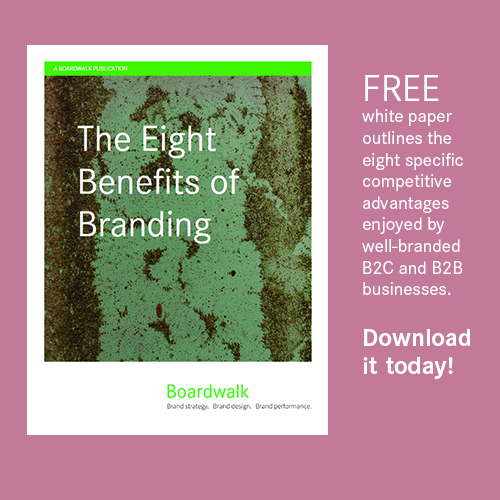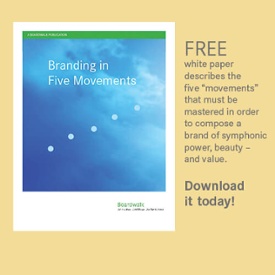 Ask any couple that’s been in a successful, long-term relationship. How do you make it work? The answer always includes honest, open and frequent communication. That’s what it takes to make love work between two people. And that’s what it takes to make a market fall in love with a brand. If you want your customers, your employees, your vendors and everybody else to have a positive relationship with your brand, you have to communicate. And if you want them to actually fall in love with your brand, your communication has to be plentiful and authentic. Easy, right? Well, not always. Just like in personal relationships, it’s sometimes difficult for a business to find the right words with which to woo qualified clients, talented employees, etc. And what if the messaging used to attract one actually repels the other?
Ask any couple that’s been in a successful, long-term relationship. How do you make it work? The answer always includes honest, open and frequent communication. That’s what it takes to make love work between two people. And that’s what it takes to make a market fall in love with a brand. If you want your customers, your employees, your vendors and everybody else to have a positive relationship with your brand, you have to communicate. And if you want them to actually fall in love with your brand, your communication has to be plentiful and authentic. Easy, right? Well, not always. Just like in personal relationships, it’s sometimes difficult for a business to find the right words with which to woo qualified clients, talented employees, etc. And what if the messaging used to attract one actually repels the other?
That won’t happen if you’ve, first, established a strong brand strategy. In that case, you will have already identified your brand’s many constituencies (See: Why Your Brand Is Like An Elephant). And you will have established a brand positioning with a single brand promise that is relevant and attractive to all of them. There’s no getting around it. To make communication commonplace and natural, you have to lay its foundation in a well-considered strategy. So don’t skip that important work. But once you do have your strategy mapped out and your key messaging defined, you have another crucial question to answer: Through what mix of media should you communicate to your market?
Your media mix will depend on many factors, among them: your budget, the size and complexity of your market, the nature of your business. For many years, we thought of media as broadcast media (TV and radio), print media (newspapers and magazines) and collateral (brochures, shopping bags, etc.). With the advent of the internet, all that quickly became known as Old Media while New Media was defined as anything that  happened through our new digital infrastructure (email campaigns, banner ads, content marketing, pay-per-click campaigns, social media, etc.). Thankfully, that artificial delineation is fading away. Most business find they need a mix of Old and New, so it’s all becoming just Media again. Only, now, you have an enormous array of channels through which you can make your brand promise. You can optimize your media spend with a strategy of integrated, inbound and outbound campaigns.
happened through our new digital infrastructure (email campaigns, banner ads, content marketing, pay-per-click campaigns, social media, etc.). Thankfully, that artificial delineation is fading away. Most business find they need a mix of Old and New, so it’s all becoming just Media again. Only, now, you have an enormous array of channels through which you can make your brand promise. You can optimize your media spend with a strategy of integrated, inbound and outbound campaigns.
While your key messaging may be determined, there are many ways you can say the same thing. So now it’s time to don your creative hat. You need to think again about who you want to reach, and about what media you’ll be using to communicate, and you need to find a way to capture your market’s attention for a second or so. In that second, you have to get your message across. It’s not easy. Professional communicators use well-crafted blends of words and visuals to tell stories and spark imagination. They employ the spoken and written word, graphic design, photography and illustration. These days, more and more brands are using animation, sound effects and music to create emotional connection. Whatever combination of tools are needed to drive awareness, interest and demand in a given market, that’s what must be harnessed.
Budget. What to spend on creative? Again, that will depend on your business. For instance, a luxury brand can’t afford to do things on the cheap. Things that appear cheap are cheap and the market will devalue them. So luxury brands have to use top photographers and advertise in expensive magazines. Otherwise, they’ll fall out of the luxury category. Other kinds of brands may be able to avoid spending so much but it’s never a good idea to take the cheapest route. Somebody once gave me a rule of thumb: Budget as much as you can for creative. Increase your budget till it becomes painful. Then increase it 20% more.
Finally, the most important thing to remember about your communication is to keep it consistent. Consistent in frequency, in message and in tone. Don’t veer off your strategy. Oliviero Toscani, the legendary creative director for the United Colors of Benetton once famously said something like, “All companies have their products and their communication. The products come and go but the communication must remain constant.” Think of Nike and their brand positioning with its simple message, “Just Do It”. Over the years, they’ve found thousands of creative ways to deliver that message … but the message itself never varies. The result? Nike is enjoying a long, beautiful love affair with millions of people.
Best Branding Reads – Week of December 19, 2016
Google's self-driving-car project becomes a separate company: Waymo
Google has a lot more flexibility in brand architecture after creating parent company, Alphabet. Thus, Waymo!
Japan’s New Digital Assistant Azuma Is a Holographic ‘Wife’
Move over Siri and Alexa. Here comes Azuma.
What Awaits Brands In The Year 2017
Interesting forecasts here. Will the CMO really disappear?
The Best and Worst Identities of 2016, Part 1: The Most Notable Reviewed
Some strategic hits and misses? Time will tell. Some design hits and misses? Yessir.
Christmas and the power of brands
Giulia Iannucci is one of my new, favorite writers on branding.
County punts on whether to adopt new modernized logo
A camel is a horse designed by committee. Too many decision-makers here.
How Habits Create The Ultimate Brand Advantage
Routines and patterned behavior build strong bonds to brands. In the Starbucks habit, anybody?



